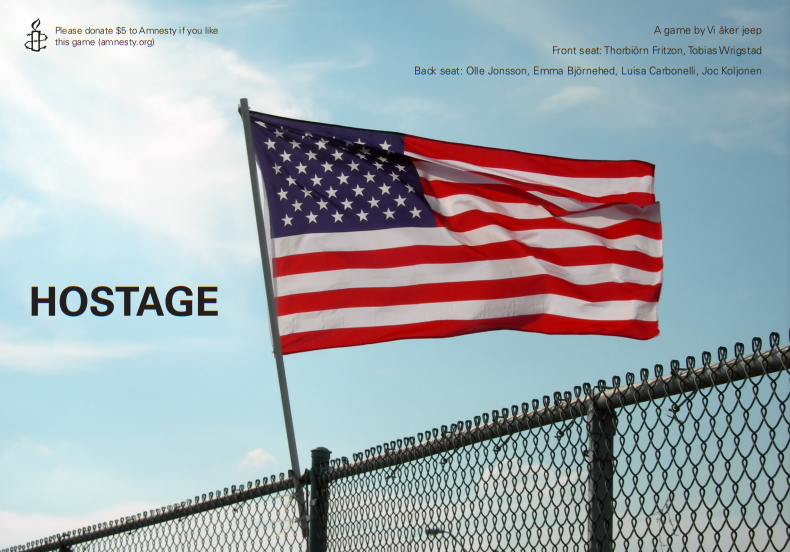In my A Game Per Year project, my goal has been to read one roleplaying game corebook for every year they’ve been published. However, I soon started to feel that it was hard to decipher how the games were really meant to be played. For this reason, I decided to start a parallel project, An Adventure Per Year, to read one roleplaying adventure for each year they’ve been published.

Hostage is a scenario designed by Thorbiörn Fritzon and Tobias Wrigstad for premiere at the Finnish roleplaying convention Ropecon in 2007. It’s part of the mostly Swedish design movement Jeepform and is available here.
The idea is that you play through a hostage situation at the New York Stock Exchange. The player characters are terrorists who demand that another terrorist must be released from prison. As befits a Jeepform game, it’s possible the players will end up playing other characters too, from stockbrokers to cops.
The design seeks to emulate the dramatic trajectory of a Hollywood thriller. Conflict resolution is based on dramatic arcs presented as graphs which have an attached time counter.
Thus, if your character decides to secure the doors in the beginning, you can consult the chart which says that at this point, the dramatic curve of success is pointing up. You’re successful.
Later, you try to control the hostages with your gun. At this point, failure has entered the picture to build tension and the curve points downwards. Thus, one of the hostages manages to throw a fire extinguisher at you and escape.
The scenario comes with a selection of different dramatic curves so you can play using the normal action movie template or a tragic template in which the graph will point downwards at the end. This signifies that all actions fail.
The scenario runs on a clock because the success or failure of actions depends on where on the curve the play is at any given moment. Because of this, it probably needs to be run very aggressively, with no time wasted.
The scenario asks the players to consider what’s the story they’re playing here, with several different variations provided. In one variant, this is a false flag operation by white supremacists who seek to murder the imprisoned terrorist. To do that, they need to get him close.
It’s also possible to have multiple dramatic curves in play at the same time. For example, general actions use the tragic curve but one character’s love story is on the Hollywood curve. This means that although the characters fail, the love story has a happy ending.